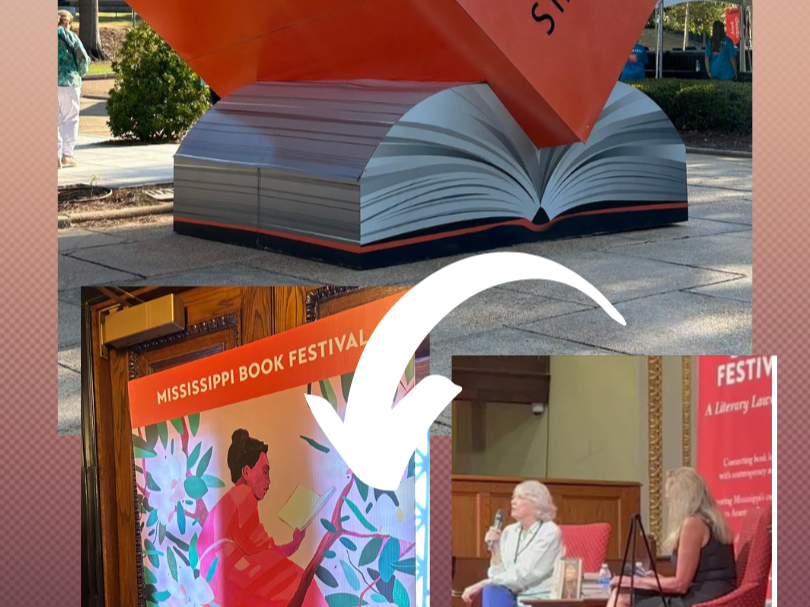Author Lois Lowry, a recent keynote speaker at Mississippi’s 9th annual Book Festival, admits that she is not the best version of herself unless she is writing.
I’m confident that many wordsmiths subscribe to this same belief.
Having penned more than 40 books, the first published in 1977 (A Summer to Die), Lowry knows what she’s talking about: she’s a writing expert and, well, a life expert, too. At age 86, Lowry jokes about her eyesight, hearing, and memory challenges nearly as often as she shares her opinions about authorship. No one would expect less from a beloved author who steals the hearts of countless adult readers, educators, and school-age children. Those readers still rank The Giver (published 1993) as one of their most beloved novels.
Though responding to all communication from readers is next to impossible, Lowry says she answers those who express a deep emotional connection to her writing. They describe how much it means to find a “sense of community” within her novel’s pages. Reflecting love and respect for her readers, Lowry says it’s imperative that books “accompany kids along their journeys.”
Naturally, the controversy over banning books is raised. Lowry says her novels have taken turns sitting atop the ALA’s 10 Most Banned Books Ever. Though recently, other titles with more controversial themes have replaced them. She recalls that The Giver was first banned in Holland, Michigan. If you’ve been there, you’ll understand why.
Here’s one surprise: Lowry is mystified over The Giver‘s inclusion in school curriculums—30 years post-publication. Why? she asks the audience. One educator says she appreciates the novel’s correlation to Plato’s Republic. Another teacher acknowledges the most popular wisdom: it’s a darn good book. One that students actually read. Though I taught secondary English and literature for years, I recommended The Giver to all students, particularly those who loved dystopian themes.
Lowry reminisces about the genesis of writing The Giver, precipitated by her granddaughter’s question: “How did you get the idea?” There’s no number one answer, Lowry says. But on her drive home, following an encounter with an aging parent, she recalls a seed—”What if there were a way to take a pill to get rid of sad memories?” She says it took considerable effort to keep the novel from gravitating toward science fiction, a genre she dislikes. (Ironically, this novel is often labeled sci-fi for book marketing purposes).
Some final nuggets from Lowry’s keynote:
- Character names simply ‘appear’ to her, and she goes with them. Best example: The Giver‘s Gabriel. She reports changing a character’s name, though, if a religious reference is perceived by readers.
- Her favorite impression of the novel’s movie adaptation? The visions offered by the Giver: “The movie showed what I just described.”
- Lowry continues to research her novels at libraries and special collections. She did this while writing The Windeby Puzzle, published earlier this year. (Set in Germany, involves characters locating a barely alive body in a bog).
There’s no slowing down for Lowry. She travels, speaks at book festivals, and continues to write novels. Along the way, Lowry unwittingly inspires the rest of us to accomplish our writing and publishing goals.

